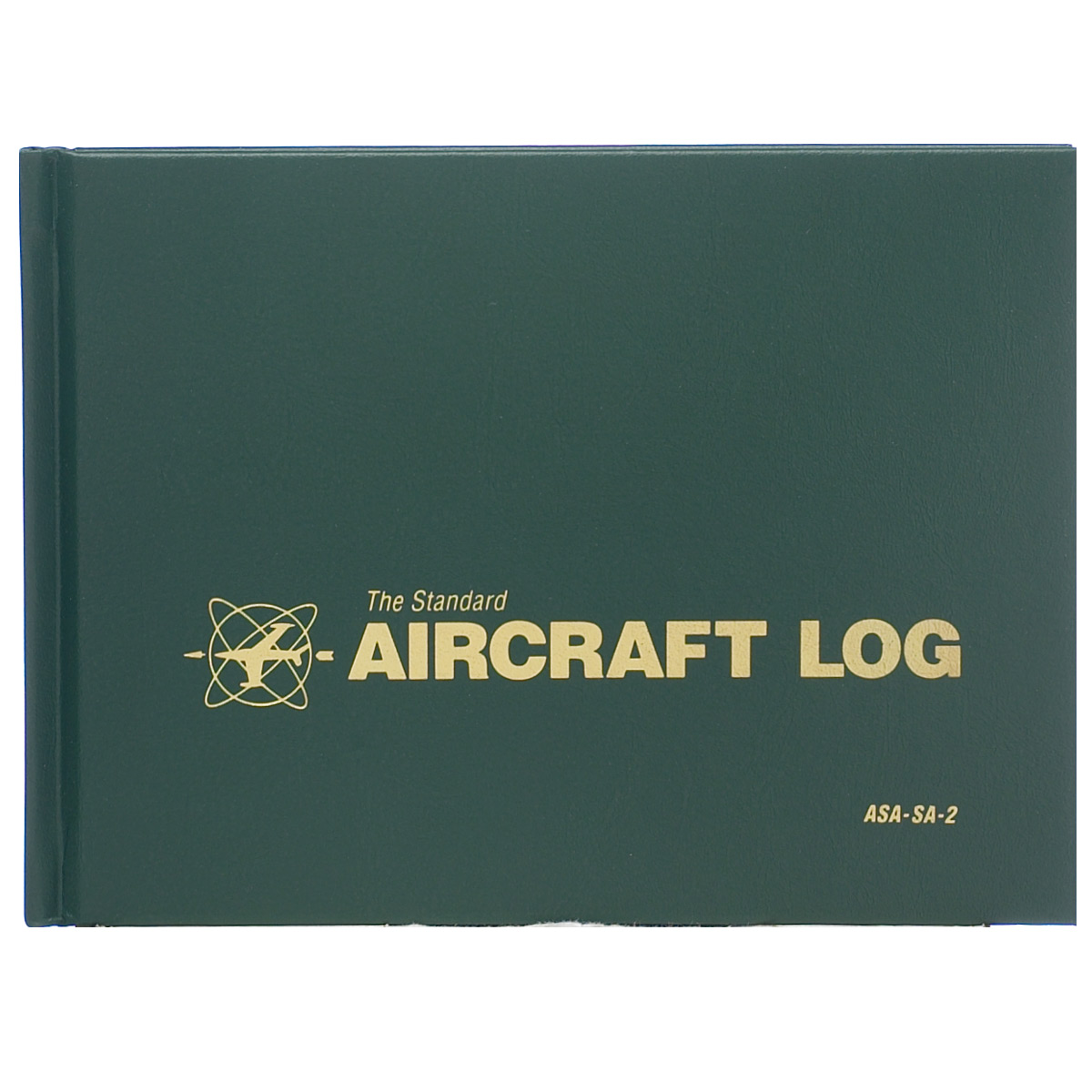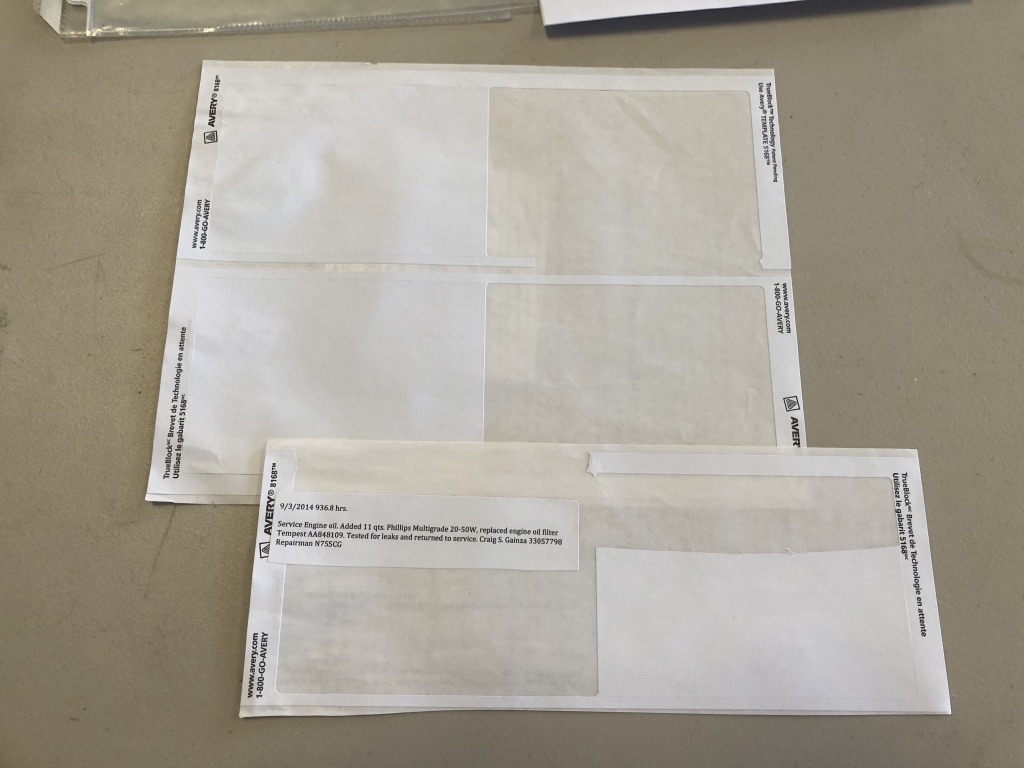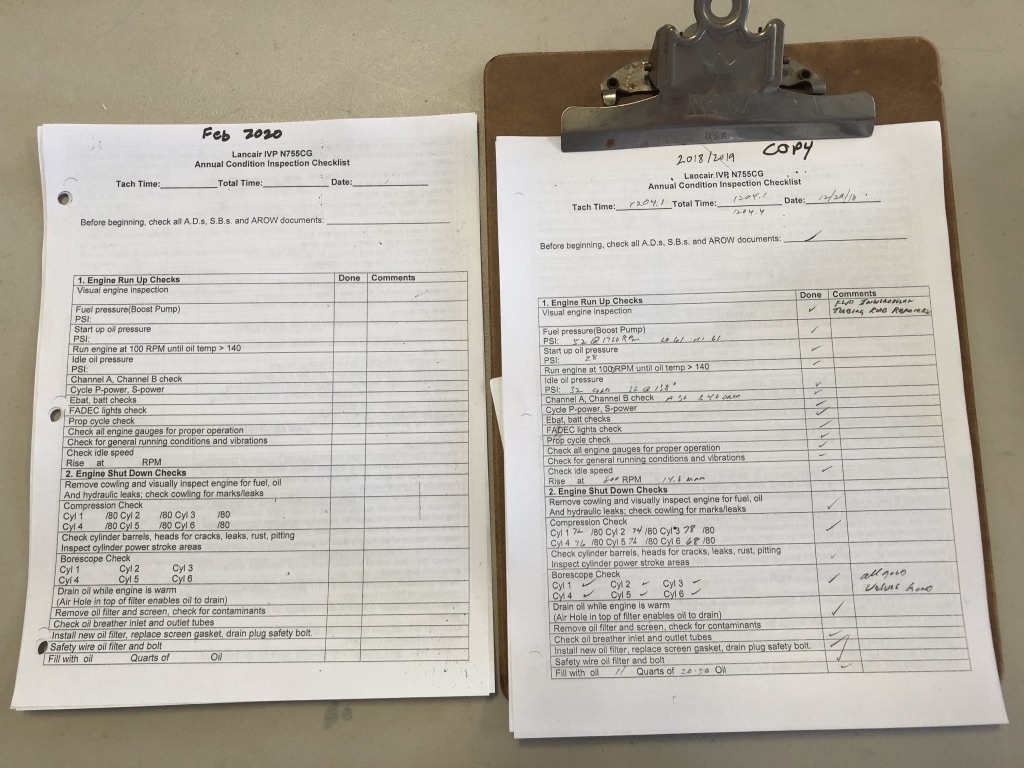Record Keeping Basics for Experimental Aircraft
 by sandy gainza
by sandy gainza

Over the years the LOBO website has accrued a number of articles specific to maintaining your aircraft. There is much expertise and advice on our website for our members, but not much available on record keeping. My experience is not deep on aircraft maintenance, but for the fifteen years we have done condition inspections on our IVP, I complete the paperwork and maintain our logbooks. The importance of good record keeping is key to maintaining a safe and sound aircraft. If you purchase an aircraft, one of the most important items to review is the aircraft maintenance records. Too often, this task is neither as thrilling or satisfying as flying or wrenching on the plane, which can lead to logbooks that are postponed or forgotten. Let's face it, it's easy to say, “I'll get around to the logbooks later on.” It's also easy to forget what you did if you don't take the time to record your work on the plane as you do it, and that's a big mistake.
Who can do your condition inspection? Who can work on your plane?
Last year, Bob Pastusek wrote an excellent detailed article titled Finding Service for your Lancair.
The FAA allows you to work on your plane even if you don't hold a repairman certificate for it, but you will need to have a certified mechanic (A&P) sign off on the condition inspection (annual). There is a wealth of information on the EAA's website about who can do repairs and condition inspections on experimental amateur built aircraft. Click here to read about it.
If you plan on hiring a repair facility to do your condition inspection, you need to provide them with an inspection checklist tailored to your aircraft. We have a few examples on the LOBO website available as samples (look under the Maintenance Tab above). Since each aircraft is homebuilt, each aircraft has unique characteristics, and a customized inspection checklist is a must. If you have no condition inspection list for your plane, LOBO can help you find one to customize. Be sure and ask your maintenance provider for the completed checklist at the end of their inspection, and keep it for reference.
What do you need to keep track of?
Prior to beginning the condition inspection on our aircraft I make a copy of the previous year’s checklist and print a new, blank one. We use a clipboard to keep track of them because the condition inspection process can take a few weekends. Large three ring binders hold the completed checklists and all receipts for repairs, as well as a list of Service Bulletins, ADs and any other repair records. There is a tab for each year. I use it as an expanded version of the aircraft logbook and refer to it in my entries if needed. Before you start your inspection, search online for any ADs and Service Bulletins for the aircraft, the engine, and the propeller. You can find these on the manufacturers’ websites, and/or search the FAA website. I print them and make a note on each one. If it doesn’t apply, I note N/A. If it does, I document the date and that the work is completed. I keep this in the binder with the completed checklists, and receipts. Each year I only print any new ones which apply and maintain the index as shown.
 (Do your condition inspection. As I mentioned earlier, the scope of this article is record keeping, not what you should do for a condition inspection! Use your checklist and be sure and mark each line or box. Keep detailed notes about the work you did.)
(Do your condition inspection. As I mentioned earlier, the scope of this article is record keeping, not what you should do for a condition inspection! Use your checklist and be sure and mark each line or box. Keep detailed notes about the work you did.)
 When the inspection is complete, add the checklist, receipts, and notes to the expanded logbook binder. The actual logbook entries are compiled from the notes, the inspection checklist, and the receipts, which often note serial and part numbers needed to complete the logbook entry. Draft a logbook entry. I use my computer, as my writing is barely legible. Avery form 8168 labels make it easy to add to your Aircraft, Engine, and Propeller logbooks. There are four to a sheet and they fit perfectly in the little (4” by 8”) logbooks. You will need to set up your document in landscape format and make two columns. Print a test entry first on plain paper, proof it, fact check it, and then use the labels. These days, there are electronic ways to keep a repair and logbook record. For me, the old fashioned binder and paper logbooks are easier to find and refer to as years go by.
When the inspection is complete, add the checklist, receipts, and notes to the expanded logbook binder. The actual logbook entries are compiled from the notes, the inspection checklist, and the receipts, which often note serial and part numbers needed to complete the logbook entry. Draft a logbook entry. I use my computer, as my writing is barely legible. Avery form 8168 labels make it easy to add to your Aircraft, Engine, and Propeller logbooks. There are four to a sheet and they fit perfectly in the little (4” by 8”) logbooks. You will need to set up your document in landscape format and make two columns. Print a test entry first on plain paper, proof it, fact check it, and then use the labels. These days, there are electronic ways to keep a repair and logbook record. For me, the old fashioned binder and paper logbooks are easier to find and refer to as years go by.
 What must I log and how do I do it?
What must I log and how do I do it?
This can be a gray area for some owners. While the FAA spells out many rules for record keeping that apply to type certificated aircraft, experimental amateur built aircraft do not have as many specific requirements. However, if you review your operating limitations attached to your special airwothiness certificate, you will see the verbiage required for your condition inspection log entry as well as the interval that inspection must take place. Keep in mind: the more details you provide, with consistent, professional notation, the easier it is to refer back and keep track of repairs and AD/SB compliance. For the condition inspection, most logbook entries will look like the sample below:
I certify that this aircraft has been inspected in accordance with the scope and detail of Appendix D of FAR Part 43, and found to be in safe operating condition. Name and Repairman's Certificate number.
If you want verbiage for your ELT check, this should do:
ELT tested in accordance with 91.207 (d) (1 through 4), and has passed all tests. Battery Expiration Date MM/YY
Sample engine logbook entry for an oil change:
9/3/2014 936.8 hrs. Serviced engine oil. Added 11 qts. Phillips Multigrade 20-50W, replaced and safety wired engine oil filter, Tempest AA848109. Tested for leaks and returned to service. Craig S. Gainza 33057798 Repairman N755CG
Other entries not spelled out in your operating limitations should include the date, time on the aircraft, work done (always refer to manufacturers specifications if possible), and include details such as part numbers, and serial numbers. Finish with your signature and repairman certificate number, or pilot certificate number if doing preventive maintenance as outlined in Part 43 of the FARs. While the FAA doesn’t specify in detail what needs to be logged with EAB aircraft, clear and precise entries are best practice for us. You can model entries based on what is standard for certificated planes. Detailed records will help you when problems arise, such as when did I repair that trim tab, or how long since we added the new autopilot? If or when you sell your aircraft, a set of complete, accurate logbooks will increase the value of your plane and inspire confidence in the buyer that they are purchasing a safe, well maintained aircraft. It is worth the extra time you put in each year and/or whenever you do maintenance on your plane.
Further Reading
https://www.kitplanes.com/aircraft-records-and-logbooks/
https://pilot-protection-services.aopa.org/news/2019/august/01/know-your-limitations
https://www.aopa.org/news-and-media/all-news/2015/august/27/aircraft-maintenance-logging-lessons
https://www.faa.gov/documentLibrary/media/Advisory_Circular/AC_20-27G.pdf
https://www.faa.gov/aircraft/gen_av/ultralights/amateur_built/amateur_regs/


